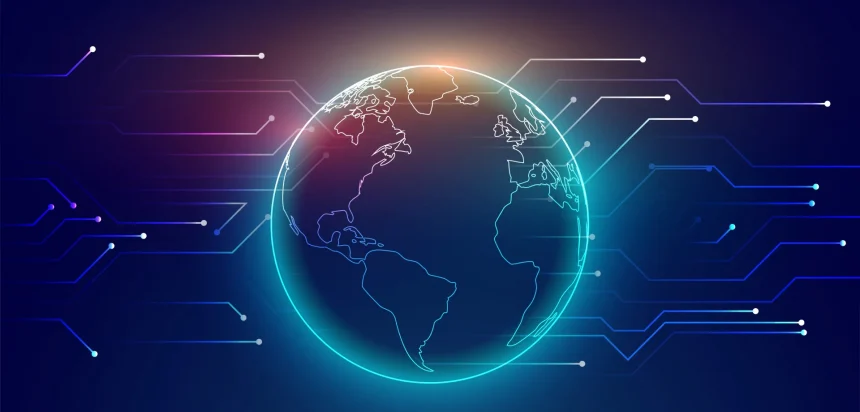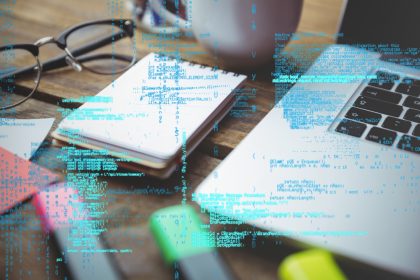For most of the internet’s history, users have relied on centralized systems run by large corporations and governments. Social media platforms, cloud storage providers, search engines, and online marketplaces all operate with centralized servers and databases owned by a few powerful entities. This structure has made the web accessible and efficient, but it has also concentrated authority and data control in the hands of a small number of organizations. As a result, issues like censorship, data breaches, surveillance, and loss of user autonomy have become defining characteristics of our digital age.
The “decentralized internet,” often referred to as Web3 or the peer-to-peer web, represents an attempt to fundamentally rethink this model. Instead of routing communications and data through central hubs, the decentralized internet distributes control across a network of participants. Each user, node, or device within a decentralized system can act as both a client and a server. This architecture eliminates single points of failure and reduces dependency on intermediaries.
At its core, decentralization is about returning ownership and control to the user. Blockchain technology—best known for powering cryptocurrencies—has accelerated this movement by providing a transparent, tamper-resistant ledger that does not require trust in any single authority. Beyond blockchain, other technologies such as distributed file systems (like IPFS), mesh networks, and federated protocols (like ActivityPub, used by decentralized social networks such as Mastodon) all contribute to this growing ecosystem.
By adopting a “trustless” framework—one in which participants do not need to rely on the honesty or competence of central authorities—decentralized systems allow individuals to engage directly with one another and verify interactions through cryptographic proofs. This redistribution of trust profoundly changes how we manage digital identities, financial transactions, and even governance systems.
The idea also extends into ethical and philosophical territory. In a world increasingly shaped by surveillance capitalism and algorithmic manipulation, decentralization is becoming a rallying cry for digital self-determination. It embodies a belief that individuals should have sovereignty over their data, the ability to communicate freely without oversight, and the opportunity to participate in open systems that they can help govern. As more people recognize the imbalance of power in today’s online ecosystems, the call for distributed, user-centric alternatives has grown louder.
The rapid rise in interest surrounding the decentralized internet is not a coincidence. Multiple forces—technological, social, economic, and political—are converging to make decentralization both desirable and feasible.
1. Data Privacy and Security Concerns:
Every major data breach, misuse of personal information, or revelation about government surveillance has fueled skepticism toward centralized platforms. Users are increasingly aware that their most intimate details—messages, photos, locations, browsing habits—are stored and monetized by third parties. The decentralized model promises a way out. By keeping data encrypted, distributed, and under user control, it minimizes the risk that a single entity can exploit or lose that information.
2. Censorship and Freedom of Expression:
In many regions, centralized platforms collaborate with governments or corporate interests to restrict speech, remove content, or block access to certain services. Decentralization resists this by design. Because there is no central authority to dictate or enforce rules across the entire network, it becomes far more difficult to censor content globally. Peer-to-peer architecture ensures that once information exists on the network, it can remain accessible so long as at least one node continues to share it.
3. Economic Incentives and New Digital Economies:
Blockchain networks have introduced a novel economic layer to the web. Digital tokens, smart contracts, and decentralized marketplaces enable participants to earn directly for their contributions without intermediaries taking large cuts. This has sparked new forms of innovation—such as decentralized finance (DeFi), non-fungible tokens (NFTs), and community-governed platforms—where value flows more equitably between creators and users.
4. Technological Maturity and Infrastructure Advances:
A decade ago, decentralization was largely experimental. Today, scalable protocols, improved user interfaces, and interoperable standards have made it viable for mainstream use. Edge computing, 5G, and cloud infrastructure have also played roles in making distributed architectures more reliable and efficient. As a result, even large enterprises and government institutions are beginning to explore hybrid or decentralized models for data management and communication.
5. The Push for Autonomy and Digital Sovereignty:
Globally, there’s a growing movement to reclaim digital independence. Whether it’s individuals desiring control over their online identities, communities building alternative social networks, or nations seeking protection from foreign tech dominance, the underlying motivation remains consistent: autonomy. The decentralized internet aligns perfectly with these aspirations by providing open protocols anyone can build upon, unbound by proprietary systems or gatekeepers.
6. Reimagining Online Communities and Governance:
One of the most intriguing aspects of decentralization is its potential to reshape how online communities operate. Decentralized autonomous organizations (DAOs), for example, allow people to collectively make decisions and manage resources through transparent, code-based governance. This could pave the way for new models of collaboration—digital cooperatives that operate without traditional hierarchical management structures.
In essence, the decentralized internet represents more than a technical shift; it signals a reconfiguration of digital power structures. It challenges the monopolies of today’s tech giants, redirects control to users, and fosters ecosystems that value transparency, resilience, and inclusivity. While it still faces obstacles—such as user adoption hurdles, scalability concerns, and regulatory ambiguity—its foundational principles resonate strongly with current global trends emphasizing fairness, security, and freedom.
As we move deeper into an era defined by artificial intelligence, data-driven economies, and heightened geopolitical tensions over digital control, the decentralized internet stands out as a vision of empowerment. It imagines a world where the network belongs to everyone, not just a few. In that sense, it is not merely a technological innovation—it is an ideological shift toward a more open, equitable, and participatory digital future.






